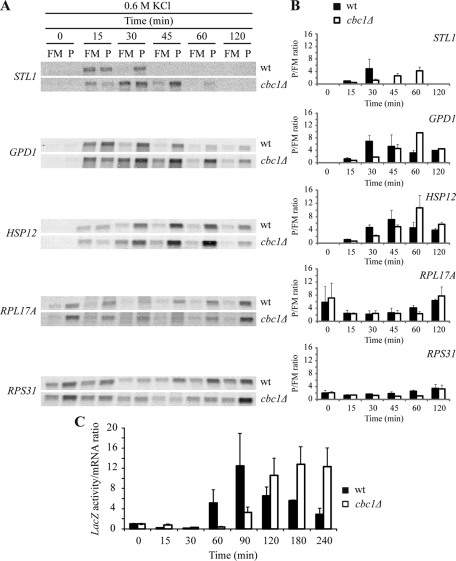FIGURE 7:
Rapid translation reprogramming under hyperosmotic stress is delayed in the cbc1Δ mutant. (A) Association of osmostress response mRNAs and RP mRNAs with polysomes in wt and cbc1Δ under osmotic stress. The wt and cbc1Δ cultures growing exponentially in YPD were treated with 0.6 M KCl, and polysomal profiles were determined at the indicated times. The fractions corresponding to FM and to P were collected and analyzed by Northern blotting using specific probes that recognize the indicated mRNAs. The RNP fraction was excluded because it never gave a signal for the mRNAs tested here (unpublished data). (B) The quantified signals from three independent replicates were used to determine the average change in the P/FM ratios for the indicated genes. (C) Translation efficiency of the STL1-LacZ fusion in wt and cbc1Δ under osmotic stress. The wt cells expressing fusion STL1-LacZ from a plasmid (the STL1 promoter fused to LacZ, LEU2+ [2 µm]) were grown in selective media at 30°C until the exponential phase, and were then transferred to YPD and incubated at 30°C for 4 h. Cells were then subjected to osmotic stress by adding 0.6 M KCl, while samples were taken at the indicated times. β-galactosidase activity was measured as described in Materials and Methods, and the LacZ mRNA level was determined by Northern blotting. Translation efficiency was calculated as the β-galactosidase activity/LacZ mRNA ratio, and the results were normalized to efficiency at time 0. The data shown are the mean and SE of three independent experiments.

